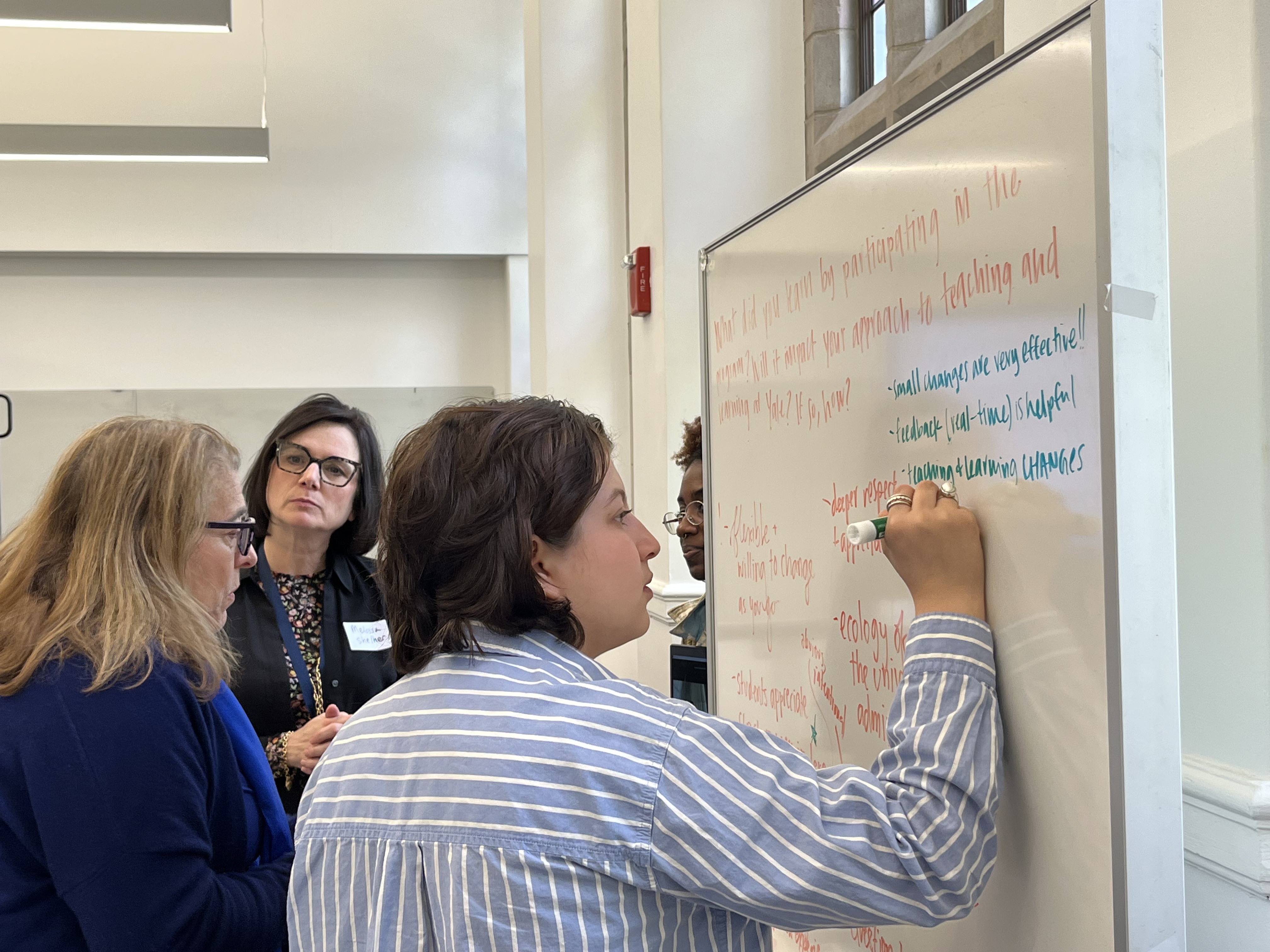What is a Flipped Classroom?
In a flipped classroom, material typically presented in lecture is delivered outside of class through video lectures, lecture slides, digital modules, and/or other online media. In place of traditional lectures, class time focuses on the development of knowledge through active learning strategies like discussion, problem sets, case studies, group activities, or experiential learning.
In these and other courses, students’ “first exposure” to course content occurs before rather than during class. The flipped model argues that this early exposure builds in time for students to consider and familiarize themselves with content before engaging with it more actively in class.
Benefits
Research into the effectiveness of flipping a classroom continues to develop, with mixed results as to their effectiveness as compared with traditional lectures. A few studies suggest that flipping the classroom can improve students’ conceptual grasp of content beyond memorization and basic knowledge (Berrett, 2012; Casasola, 2017). Flipped classrooms can also provide students with a greater mixture of activities, media, and opportunities to participate, thus serving more diverse populations and assuring more inclusive opportunities (Lage, 2000).
Instructors should be aware that some studies also indicate student resistance to the flipped classroom, observing that flipped activities require more rigorous work and thinking from students in class (Lieberman, 2017). Students at Yale traditionally expect lectures in class, but certain strategies for flipping have proven effective, and students report satisfaction with strategies that clearly improve their learning experience.
Flipping also does not ease instructor preparation time; in many cases, instructors have more to prepare. They must develop quality lecture videos or out-of-class content, while designing in-class activities with effective assessments to measure student learning. Instructors can consider a variety of examples and strategies to evaluate the best modes of flipping in order to meet their desired learning outcomes.
Examples of Flipped Classes
Methods
Instructors who want to create a flippled classroom maay want to consider four core principles:
Move lecture content from in-class to out-of-class by using
- Videos from YouTube, the Khan Academy, MIT’s OpenCourseWare, or Coursera
- Professionally recorded lectures
- PDFs with a walk-through of how to solve a problem
- Detailed PowerPoint slides
- Video recorded from a computer or smartphone, walking through how to solve a problem
Use the active learning of a flipped classroom as an incentive for students to prepare for class
- Small group discussions
- In-class practice problem sets
- Group debates
- Group projects
Employ mechanisms in class to assess student understanding
- Low-stakes formative assessment activities
- Peer-evaluation of writing or problem sets
- Self-evaluation assignments
- Pre-class worksheets
- Pre-class online quizzes
Emphasize that In-class activities will focus on higher level cognitive activities
- Conceptual questions
- Real-world application
- Data analysis and synthesis
- Other active learning exercises
